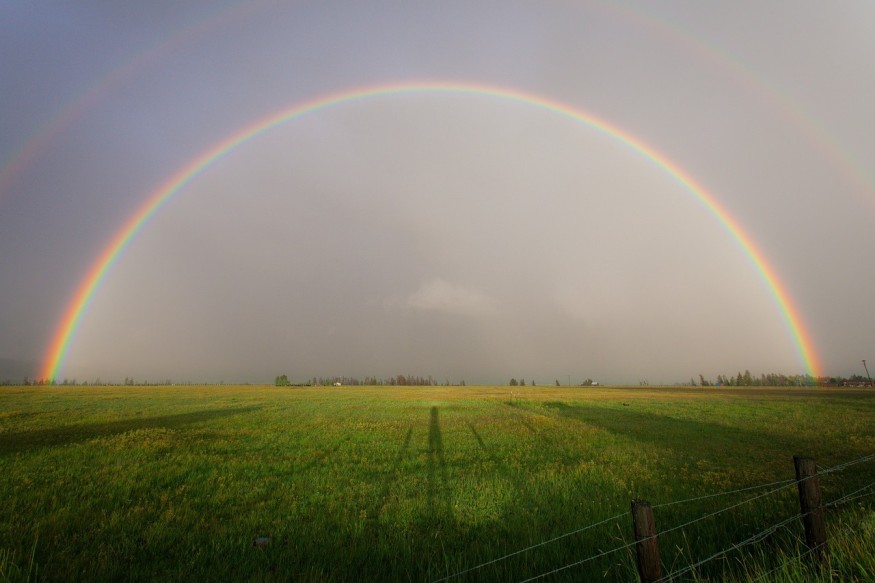Legend has it that a pot of gold is supposed to be hidden at the end of each rainbow. However, is there truly a point where the rainbow ends, and can humans reach it? Many only view rainbows as colorful arcs in the sky, yet it is a complete circle. Typically, the earth's horizon obscures the lower half of the circle from view.

Formation of a Rainbow
A rainbow is a multicolored arc that is formed when sunlight interacts with water droplets in the air, according to National Geographic. The most commonly seen rainbow is created when sunlight hits raindrops at a specific angle, approximately 42 degrees. However, these beautiful arcs can also be observed around fog, sea spray, or waterfalls.
It is important to note that although it appears to be in a particular location in the sky, a rainbow is an optical illusion, and its appearance depends on the observer's position and the source of light.
The source of light, usually the sun, is positioned behind the observer viewing the rainbow. The brightest and most vivid colors are found on the rainbow's outer edge, while the inner edge appears darker. The center of a primary rainbow is the imaginary point opposite the sun, known as the antisolar point.
A rainbow is the result of the refraction and reflection of light waves, both of which involve changes in the direction of the waves. Refracted waves may appear bent, while reflected waves seem to bounce back from a surface or wavefront.
Furthermore, the water droplets' refractive index determines the radius of a rainbow. A refractive index measures how much a ray of light bends as it passes from one medium to another, such as from air to water. A droplet with a high refractive index creates a rainbow with a smaller radius, whereas saltwater's higher refractive index will yield a smaller rainbow than freshwater.
To form a rainbow, light enters a water droplet, refracts, and reflects off the droplet, refracts again at multiple angles as it exits the droplet, and finally reaches the observer's eyes, creating the beautiful and awe-inspiring multicolored arc of a rainbow.
Rainbows are Circular and Have No End
Rainbows are a natural phenomenon that is typically only partially visible due to the Earth's horizon obscuring the bottom half of the circle. However, a rainbow is circular, and its full shape can be seen if standing on a mountain with a clear view above and below and the sun is behind them after a rain or mist.
In an article in The Conversation, UMass Lowell Professor Partha Chowdhury wrote that to view the full circle of a rainbow; one would need to be in an airplane above the clouds or create a rainbow through an experiment.
One experiment to create a rainbow is to use a sprinkler hose on the "mist" setting while standing with the sun behind. One may see a rainbow by creating a mist screen and looking at one's shadow. However, complete visibility of the circle requires patience and practice, similar to that of a scientist.
When flying in an airplane, if the pilot is flying just above the cloud cover and the sun is behind them, they may be able to see a small circle of color around the shadow of the plane on the clouds. This phenomenon, known as "pilot's glory," is more likely to be seen by experienced pilots with a clear view from the cockpit.
RELATED ARTICLE : Watch an Inverted Rainbow Hover Above a Palm Tree; How Does a Circumezenithal Arc Form?
Check out more news and information on Rainbow in Science Times.











